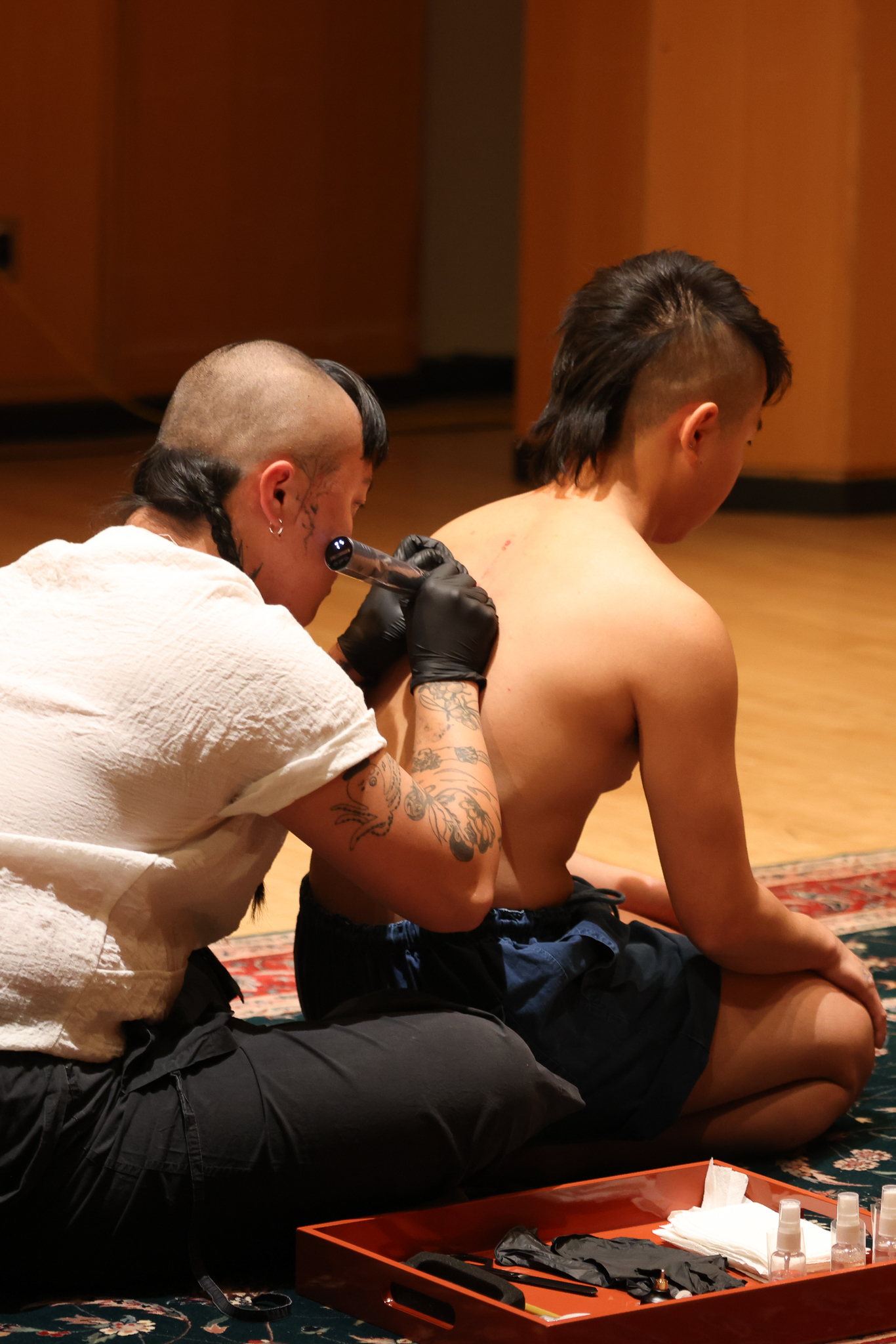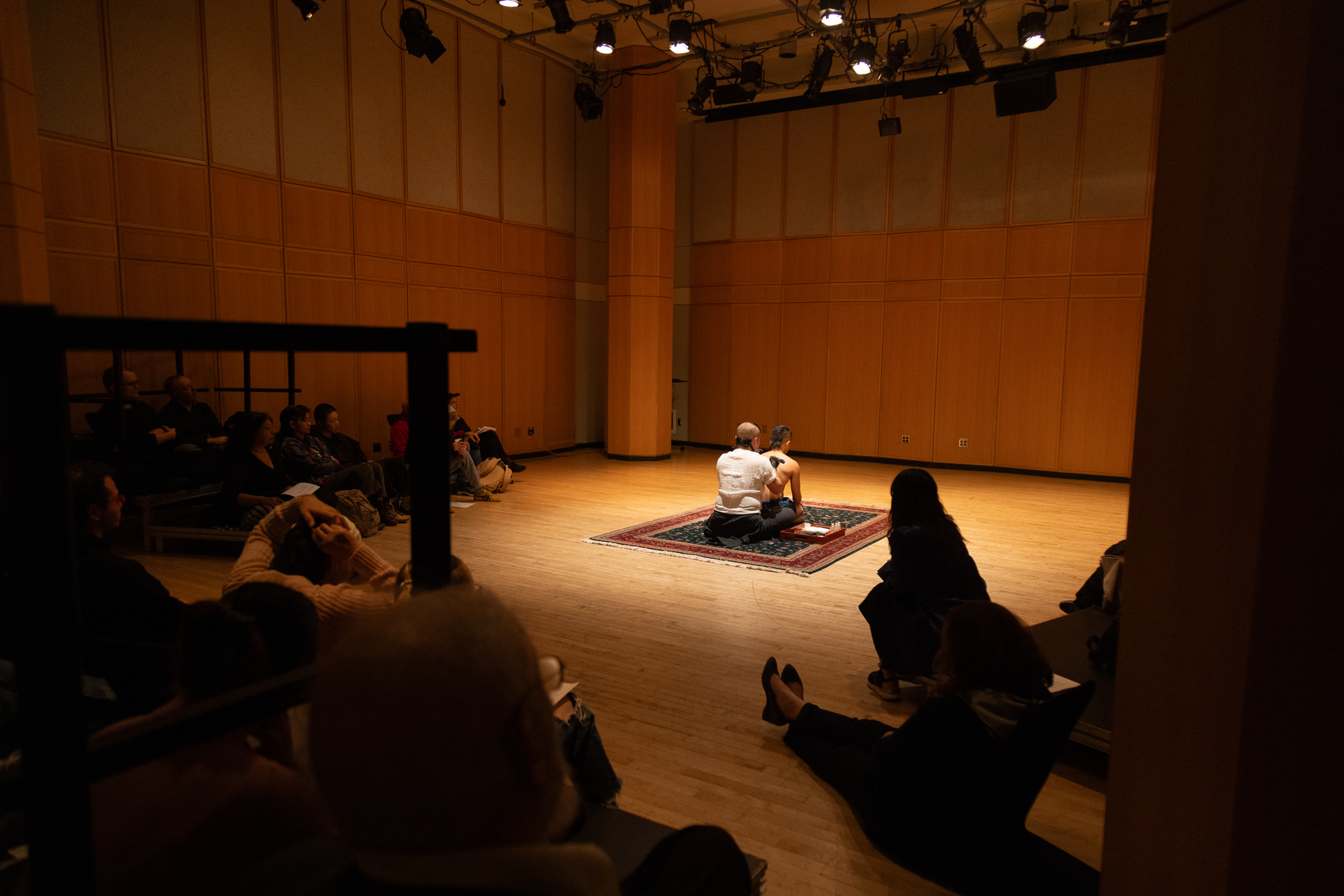Ornamentalism
Performed at Prelude Festival, September 2024
Curated by John Hoobyar and Jess Barbagallo

Ornamentalism considers porcelain as a metaphor for Asian American experiences of un-embodiment, cutting into skin to make visible a history of colonial violence.
In this piece the definition of the word porcelain is etched into skin using a tattoo machine, without ink.
Definitions are not concrete. While their tonelessness may suggest an objective view, definitions are always subjective. Depending on who writes them, they can contain histories of conquest, violence. From looted Ming dynasty china to “chinoiserie”, porcelain has historically been looted, collected, and culturally appropriated.
The properties of China include transparency, resilience, resistance to corrosion and thermal shock. Extend this to the model minority stereotype which paints a myth of Asian Americans as accomplished, respectable, law-abiding; hard-working, quiet, passive, eager to blend in.
These qualities presuppose to portray Asian Americanness as already holding a position in society that whiteness does, otherwise posed to next take its place. Instead, what they do is diminish, erase, and invisibilize. Extend porcelain’s translucency to the supposed adjacence to whiteness that Asian Americans have. To quote Cathy Park Hong: “when I hear the phrase “Asian Americans are next in line to be white,” I replace the word “white” with “disappear.””
In his 1922 treatise The Problem of China, the British philosopher Bertrand Russell wrote that Chinese men had a particular “passive endurance”, being able to “endure torture, and even death, for motives which men of more pugnacious races would find insufficient.” This stamina, however, was used as argument of a Chinese man’s passivity rather than strength.
On the other end of the gender spectrum, consider the “thingliness” of Asian American femininity. To consider porcelain as metaphor for Asian personhood —object a metaphor for human being — is to reckon with the denial of interiority for Asian femininity.
Using pain and ornament; pain as ornament, this piece speaks to both.
Much like the invisibilized nature of Asian American strife, in little over a week, these marks will scab and shed. Invisible to the unknowing eye, its traces will be visible only to those who know what took place.
Photos: Bronwen Sharp



